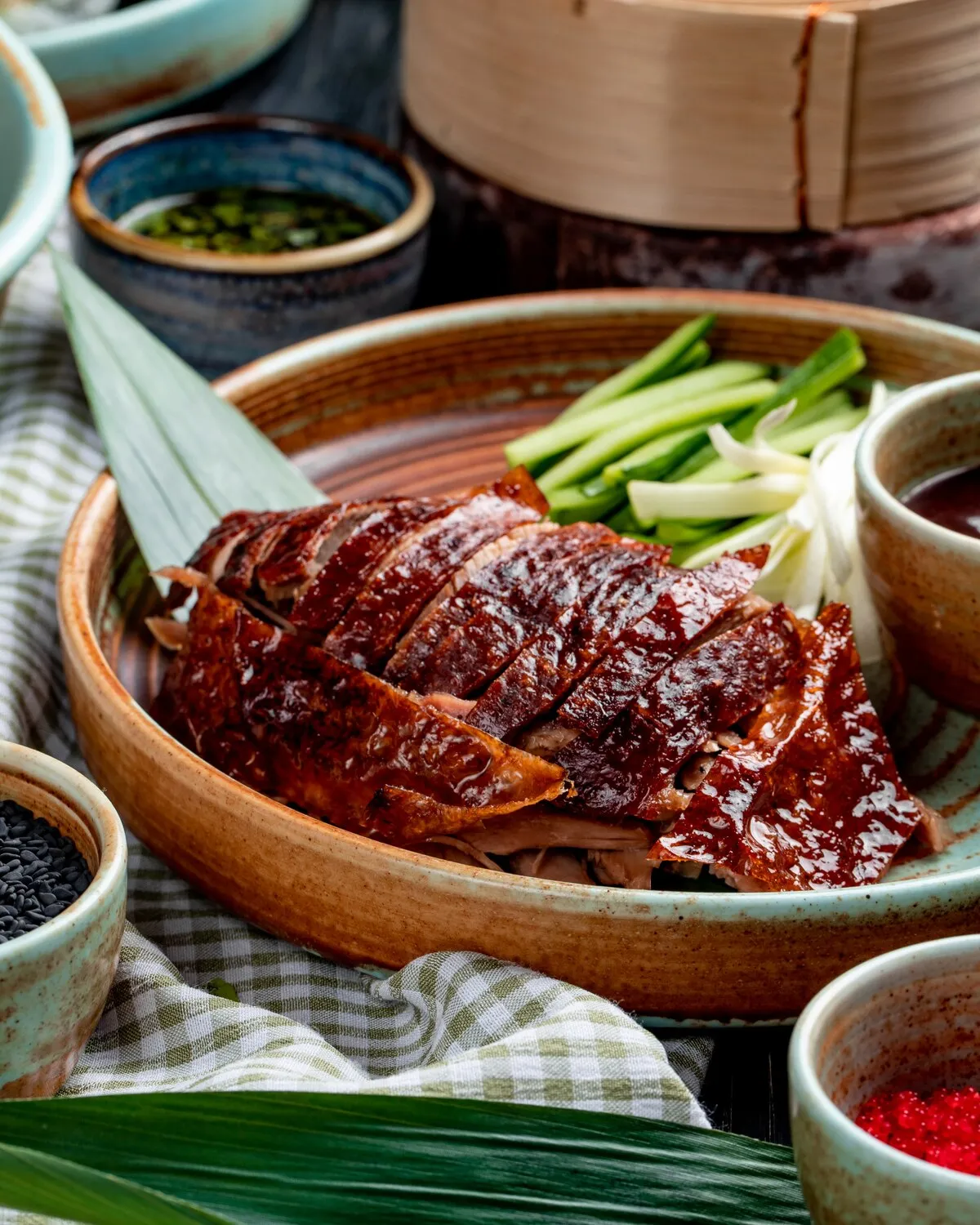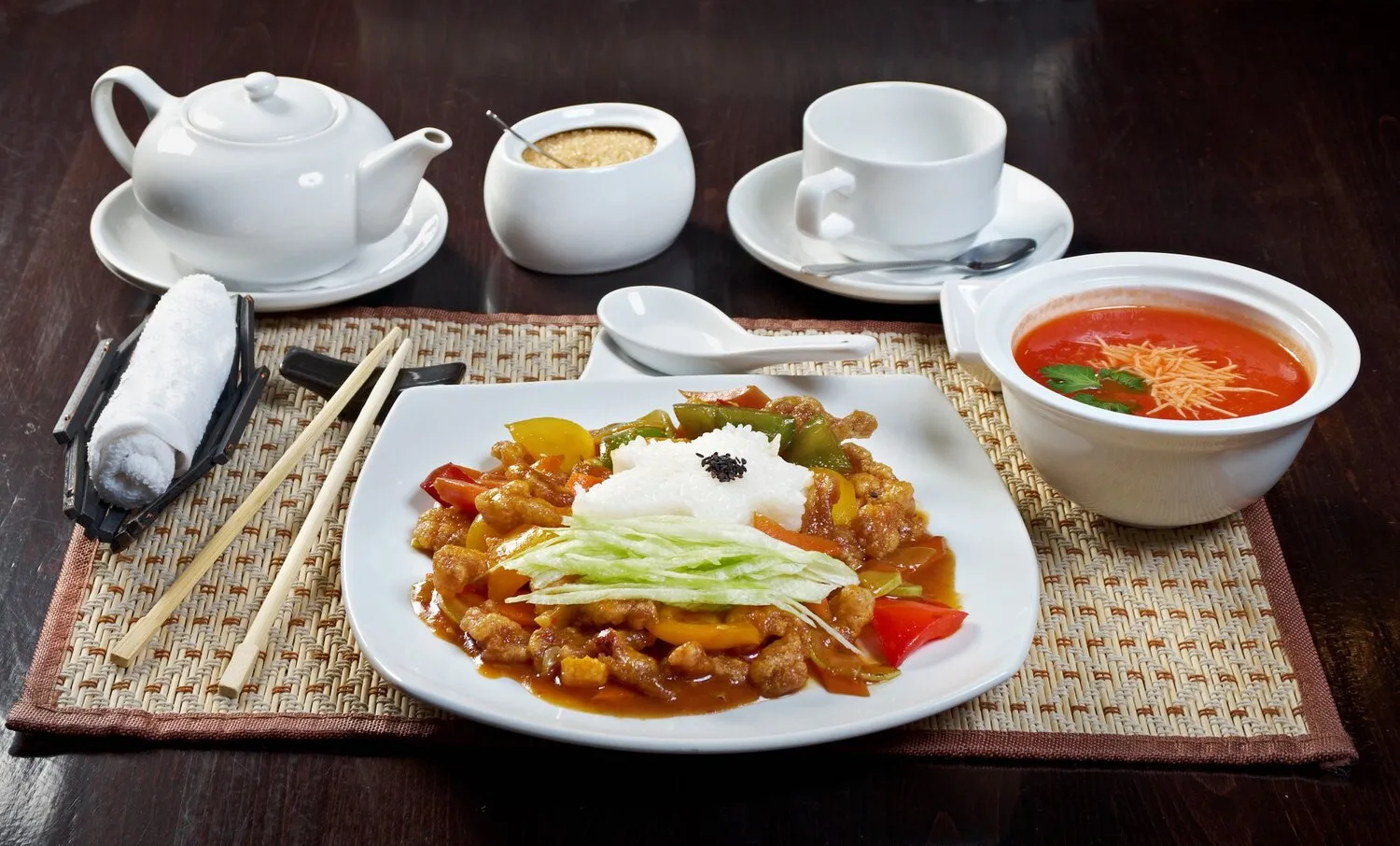
Nasi Rames
A selection of small Indonesian dishes served with rice, offering a variety of flavors and textures.
Nutrition Facts
* The % Daily Value (DV) tells you how much a nutrient in a serving of food contributes to a daily diet. 2,000 calories a day is used for general nutrition advice.
Nasi Rames, meaning 'mixed rice,' reflects Indonesia's diverse culinary heritage. It's influenced by various regional cuisines and trading history, incorporating elements from Chinese, Indian, and European cooking. The 'rames' style of serving multiple dishes with rice is a practical and economical way to enjoy a variety of flavors.
Nasi Rames is more than just a meal; it represents the Indonesian spirit of sharing, diversity, and resourcefulness. It's a common sight at warungs (small restaurants), family gatherings, and celebrations, showcasing the communal aspect of Indonesian dining.
Communal Dining
Nasi Rames reflects the Indonesian tradition of sharing food and enjoying meals together. It is often served as a buffet, allowing individuals to choose their preferred combinations and portion sizes.
Regional Variations
Each region in Indonesia has its own unique take on Nasi Rames, showcasing the diverse culinary landscape of the archipelago. Ingredients and preparation methods vary widely based on local produce and traditions.
Accessibility and Affordability
Nasi Rames is a widely accessible and affordable meal, making it a staple for people from all walks of life. It provides a satisfying and balanced meal at a reasonable cost.
Nasi Rames offers a complex symphony of flavors, ranging from savory and spicy to sweet and tangy. The key is the combination of contrasting elements that create a harmonious experience.
The flavor profile of Nasi Rames is incredibly varied, depending on the chosen side dishes. Common components include: * Savory meat dishes (beef rendang, ayam goreng): Provide richness and depth. * Spicy sambal: Adds heat and intensity. * Sweet and tangy acar (pickled vegetables): Offers a refreshing counterpoint. * Nutty and flavorful peanut sauce (gado-gado or similar): Contributes a creamy texture and earthy notes. * Crunchy krupuk (crackers): Provides textural contrast. The rice itself, often steamed or cooked with coconut milk, acts as a neutral base to balance the strong flavors.
Flavor Balance
Pay attention to the balance of flavors. Combine spicy, sweet, savory, and tangy elements for a well-rounded meal. Don't be afraid to experiment with different combinations.
Textural Contrast
Incorporate a variety of textures, such as crunchy crackers, tender meat, and soft vegetables, to make the dish more appealing and satisfying.
Rice Quality
Use good-quality rice that is fluffy and fragrant. The rice serves as the foundation of the dish, so its quality is crucial.
Sambal Selection
Choose a sambal that complements the other dishes. Consider the level of spiciness and the flavor profile (e.g., tomato-based, chili-based, shrimp paste-based).
Explore additional Main dish dishes and restaurants
Explore Main dishDiscover top dining spots and culinary experiences in Arnhem.
Explore ArnhemLearn more about the food culture, restaurant scene, and culinary heritage of Netherlands.
Explore Netherlands
